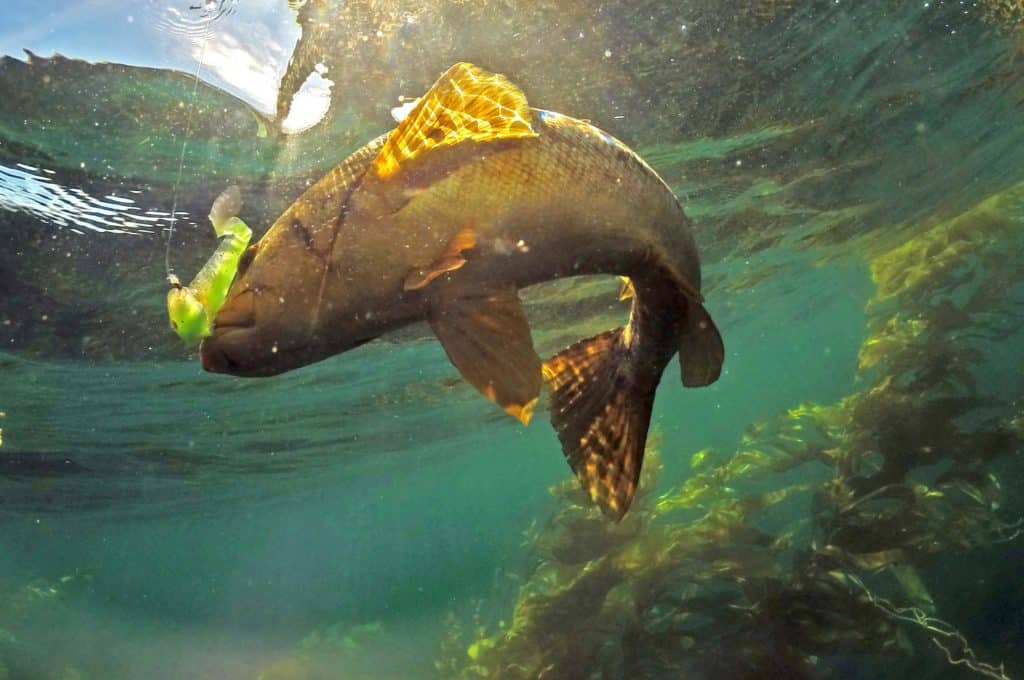
Ask any Southern California inshore angler where to catch calico bass, and the vast majority would point you toward one of the many kelp beds that line the coast and wrap the offshore islands, habitat that has earned this species its official name—kelp bass. Yet, the sheer expanse of the average kelp bed stacks the odds against success, especially when targeting bigger bass weighing 5 pounds or more.
Unlike isolated spots like a reef or a rocky point, kelp beds don’t offer a consistent “right” place to cast your lure in hopes of getting a bite. When calicos feed in the kelp, they’re likely only doing so in 10 to 15 percent of the bed, meaning that if you fish the other 85 to 90 percent, you’re probably not going to catch a whole lot.
However, regardless of location or depth of water, feeding calico bass relate to all kelp beds in the same manner. Calicos use their checkerboard coloration pattern to blend in with the amber kelp fronds as they wait to ambush baitfish. Since baitfish tend to swim in open water on the edge of the kelp, a feeding bass tends to set up just inside the bed, adjacent to open water.
To remain stationary while attempting to ambush an unwitting baitfish, a calico always points its nose into the current. This means that feeding bass post up on the outside up-current edge of the bed. That’s where you’re most likely to find a big, hungry calico bass on any given bed.
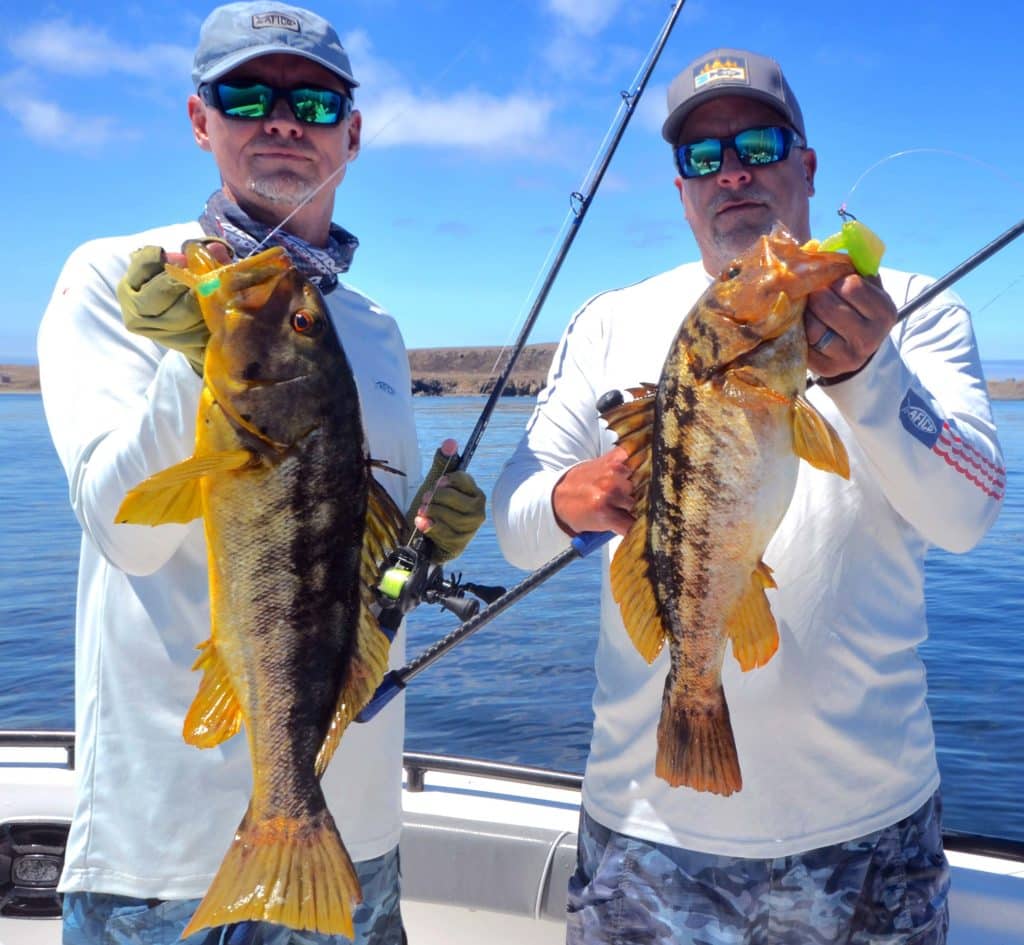
Bed Types
Different kelp bed types also affect bass positioning. In heavy kelp beds, even those with the surface frond pulled completely below the surface by current, bites usually come within the first 20 yards of the bed’s leading edge. If the outside edge of the bed is straight and featureless, you might find a few random bites along its length. If the outside edge is irregular, any patch of kelp that pokes out from the main bed can act as a secondary leading edge and can hold multiple fish.
Kelp beds with sparse fronds and open water in between tend to spread the bass bites out farther along the length of the bed, and you might experience scattered bites along the entire area. These beds often extend from shallow to deep water, and feeding bass will be isolated to specific depth ranges that hold bait. Approach these beds from deep to shallow along the leading edge when looking for biting bass.
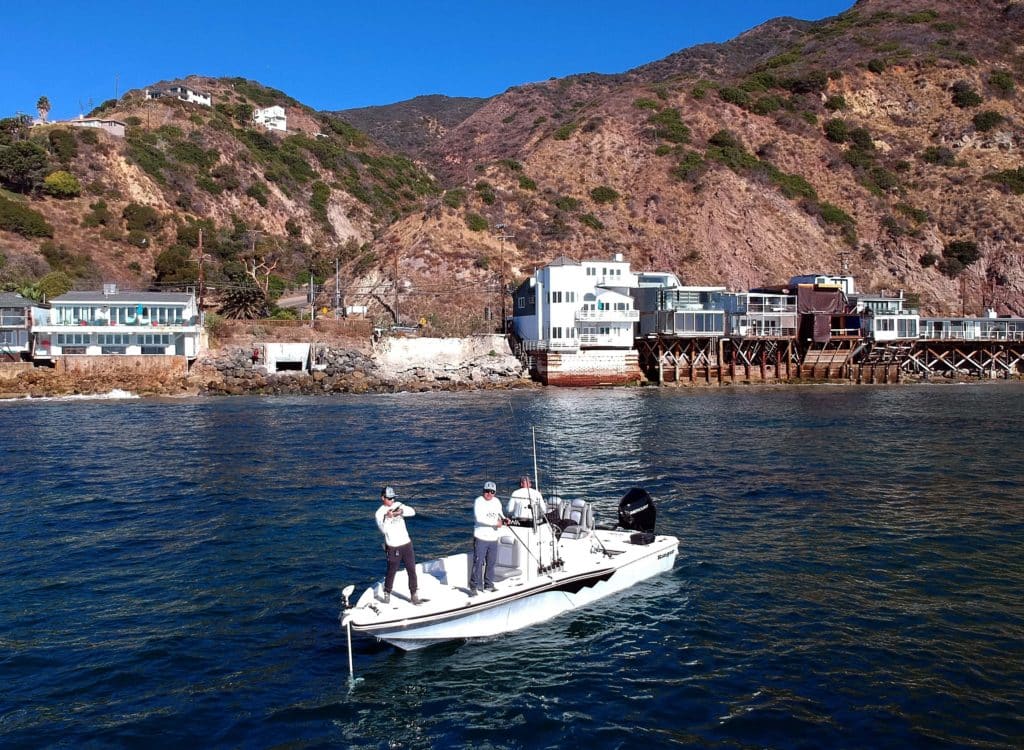
Stay on Fish
A common mistake that even experienced anglers make involves losing track of biting bass and continuing to fish in dead water. It’s easy enough to do. You pull up to the leading edge of a bed and immediately start getting bites, but once you drift past the bite zone, the action slows way down, even though the kelp looks really fishy. While this might not seem like a big deal, it’s a real time vampire, and can waste a good percentage of your fishing day. Once you encounter dead water, keep moving and looking for new areas and likely ambush points to fish.
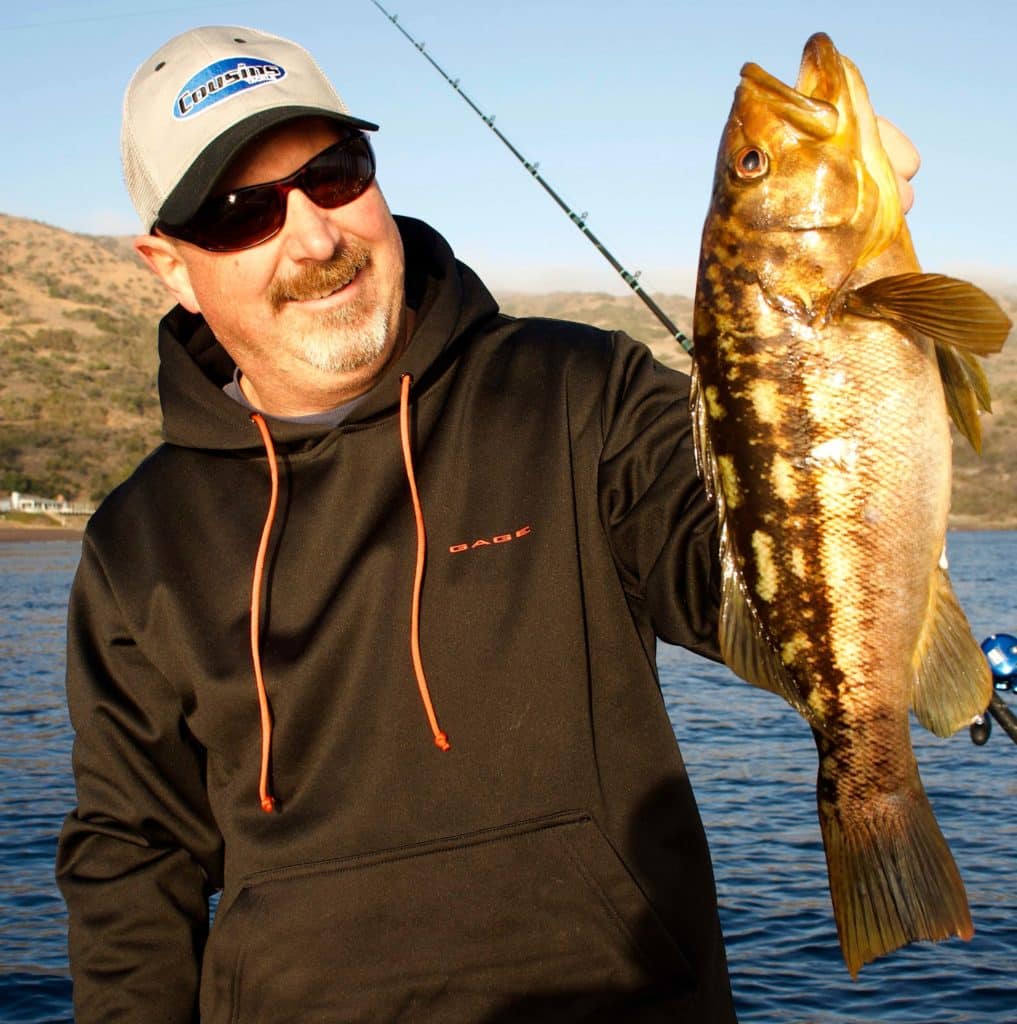
Weedless Wonders
Kelp fronds easily snag hooks. To minimize fouled lures, wasted time and lost tackle, many calico anglers employ lures such as weedless swimbaits. Popular lures include the 7-inch MC Weedless Swimbait rigged on a 3/4-ounce 8/0 Owner Weighted Beast hook or a 5-inch MC Viejos Series Swimbait rigged on a 3/4-ounce WAR Baits weedless leadhead.
Whenever approaching a kelp bed, position your boat so that it points in the same direction as the current, with the bow approaching the leading edge of the bed. I normally slide up and stop a long cast from the edge, allowing the angler in the bow to fan cast along the leading stringers. If feeding bass are in the bed, they’re likely to race out from among the stalks and bite the bait.
If those first few casts show promise, I aim the boat toward the outside edge of the bed and bump the trolling motor along, allowing for casts to the entire leading edge. Once I reach the outside, I’ll point my bow down-current again to drift and make casts along the kelp. While doing so, I look ahead for any outcroppings in the edge of the kelp and steer the boat’s drift to put the bow angler in position to cast. By moving the boat in this manner, you can cover all of the high-percentage edges of the bed without wasting time having to drift through dead water
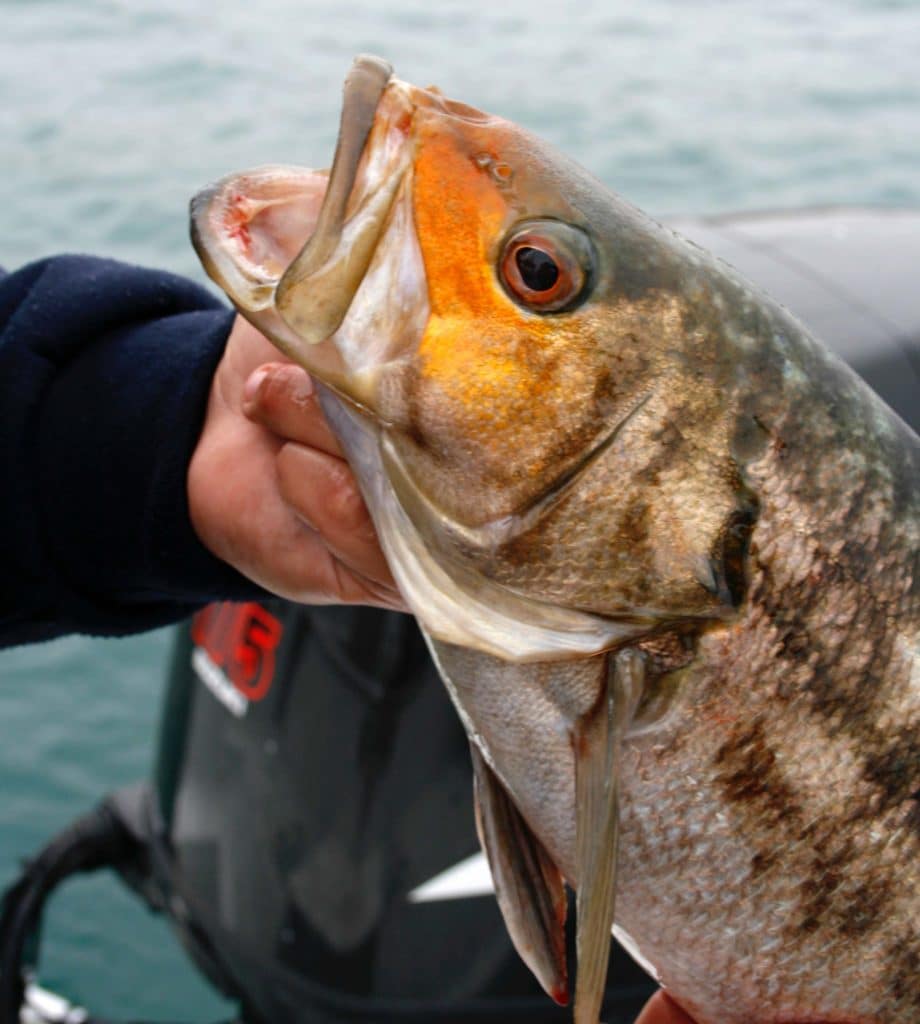
Presentation Pointers
To present a weedless swimbait, simply cast the lure past whatever stringer you want to target and use a fast retrieve to burn the bait past the zone. Keep your casts fairly short if they’re perpendicular to the current, as you’re going to have to fight your bass past all of those kelp stringers, and that can be tough if you hook a big one.
Read Next: Tighter California Limits Aim to Protect Populations of Saltwater Bass
You can use just about any heavy bass rod and saltwater low-profile baitcasting reel to cast a weedless swimbait, but I prefer using a light-action, 7-foot graphite-composite rod. These rods feature a graphite butt section with a soft fiberglass tip and are normally considered live-bait rods. The soft tips on these rods act as shock absorbers and increase the hookup ratio due to the way bass strike this bait. This rod should be paired with a mid-size low-profile baitcasting reel like the Penn Fathom 300 filled with 65-pound braid and a 2- to 3-foot, 60-pound fluorocarbon leader.
Calicos normally attack a weedless swimbait from behind and inhale it tail first. If you set the hook the moment the fish hits, the bait’s weedlessness often causes it to slide right out of the fish’s mouth without hooking up. So, when you see or feel a bass take the lure, pause for a moment and allow the fish to turn with the bait before setting the hook.
Be it a special hookset or finding the edge that’s holding, these little things make a big difference when fishing calicos in the kelp.








